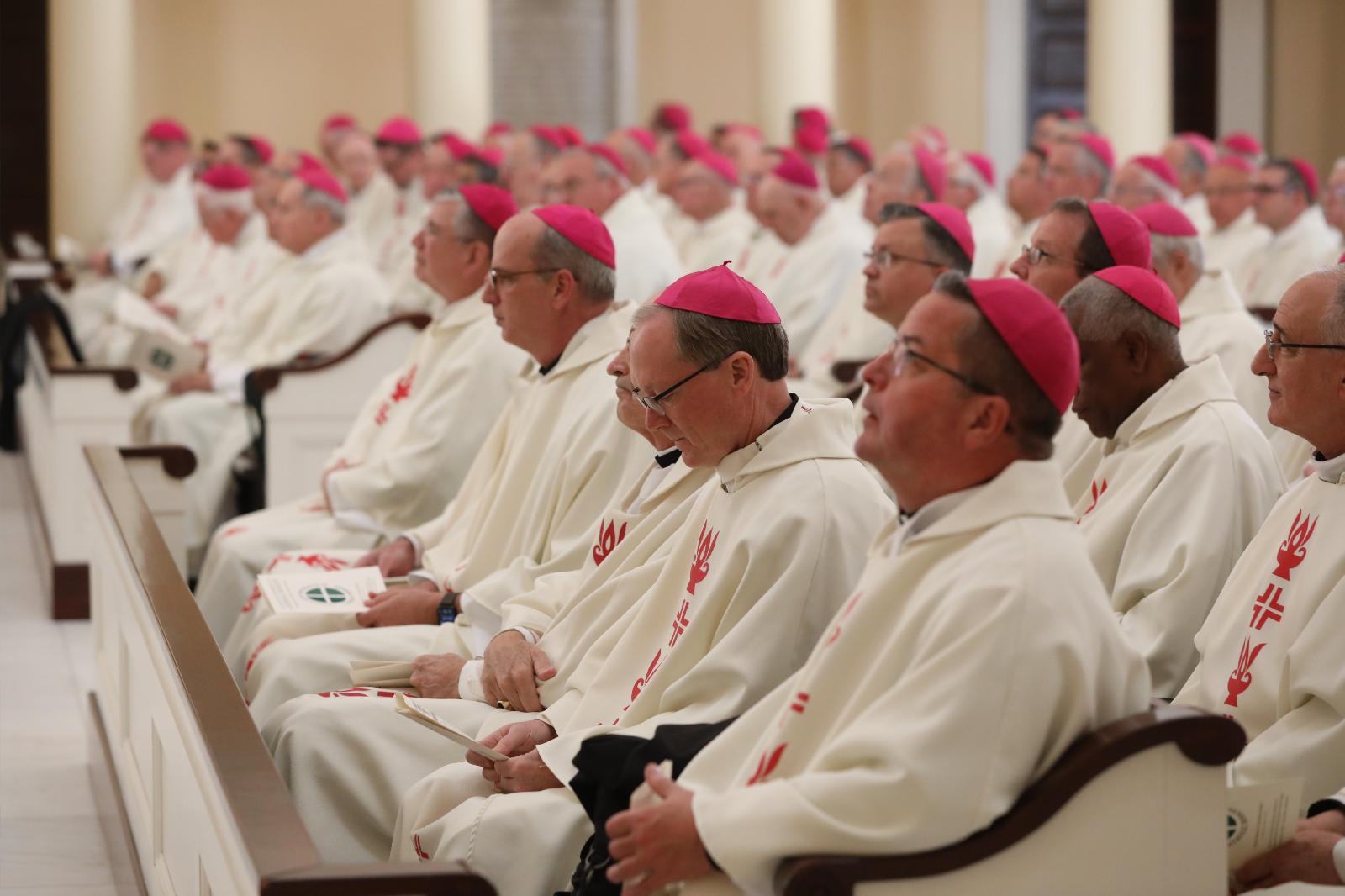Major changes in store for Latin Church in U.S. as bishop appointments stall
Change looms on the horizon for the American hierarchy. And the anticipation continues to build as the appointment of Latin Church bishops in the United States has seriously stalled out over the last year or so.
With Milwaukee Archbishop Jerome E. Listecki turning 75 on March 12, there are now 19 dioceses — 12 with bishops serving past retirement age and seven vacancies — in the U.S. Latin Church awaiting the appointment of a diocesan bishop, also called an “ordinary” in the church’s law.
EXPLAINER: How are bishops chosen?
Only one Latin Church ordinary has been appointed in the last six months, in addition to the appointment of five auxiliary bishops in the same time — one of whom was Bishop Jeffrey M. Montforton, a Detroit Archdiocese auxiliary bishop who headed the Diocese of Steubenville, Ohio, from 2012 to 2023.
The last year has seen an early end to a number of episcopal tenures in the U.S., as several active diocesan bishops retired early or died prematurely.
Bishop Peter M. Muhich, 62, bishop of Rapid City, South Dakota, since 2020, died of cancer Feb. 17. Bishop Mario E. Dorsonville, 63, bishop of Houma-Thibodaux, Louisiana, for just under a year, died Jan. 19 of an unspecified liver disease diagnosed not long before his death.
In addition to Bishop Monforton, there also have been premature departures for a few other diocesan bishops within the last year.
Bishop Richard F. Stika retired from leading the Diocese of Knoxville, Tennessee, in June 2023 at 65 owing to health complications. He also faced two lawsuits accusing him of mishandling sexual abuse accusations in his diocese — one lodged against a former seminarian in his charge and the other against a priest — where the victims claimed some form of retaliation for coming forward.
Bishop Joseph E. Strickland, 65, bishop of Tyler, Texas, since 2012, was removed from office Nov. 11, 2023, after an apostolic visitation following the bishop’s social media posts in May accusing Pope Francis of “undermining the deposit of faith.”
The sole appointment of a Latin diocesan ordinary in the past six months was announced in Portland, Maine, on Feb. 13, where Bishop-designate James T. Ruggieri, a pastor in the Diocese of Providence, Rhode Island, will be ordained a bishop this May.
There are 12 American diocesan bishops who remain serving as ordinaries past 75, the age bishops are required by church law to submit their resignation to the pope. Four of the 11 are metropolitan archbishops, including Cardinal Seán P. O’Malley of Boston and Cardinal Wilton D. Gregory of Washington.
In 2024, the American episcopate will see 15 ordinaries reach retirement age, eight of whom are metropolitan archbishops, including two cardinals: Cardinal Blase J. Cupich of Chicago and Cardinal Daniel N. DiNardo of Galveston-Houston. And 2025 is set for 14 American diocesan ordinaries to reach retirement age, six of whom are metropolitan archbishops, including Cardinal Timothy M. Dolan of New York and Archbishop Roberto O. González Nieves of San Juan, Puerto Rico.
It is not uncommon that bishops remain in office for a year or two after reaching 75. Questions emerge about how healthy it is for a diocese to have a lame duck bishop in office too long, though, not to mention what kind of leadership vacuum can be created when a diocese is left vacant too long.
The man at the center of appointing new bishops is Cardinal Christophe Pierre, 78, apostolic nuncio to the United States. Widely respected by American bishops, who are often characterized as critical of the current pontificate, Cardinal Pierre was named a cardinal by Pope Francis in 2023. Cardinal Pierre’s new standing as a member of the College of Cardinals puts him on equal footing with the American members of the Vatican’s Dicastery for Bishops — Cardinal Cupich and Cardinal Joseph W. Tobin of Newark, New Jersey — who are typically regarded as part of a progressive minority of the U.S. bishops. This is largely what accounts for, in the minds of veteran church-watchers, as a largely moderate, non-ideological series of appointments.
The flurry of appointments expected across U.S. dioceses in the next few years come amid reports that more than a third of the candidates asked to accept the nomination to the episcopacy are rejecting the appointment. There is no question the clergy sexual abuse crisis would be a serious factor in this, but so too is the changing landscape of ecclesial life. U.S. bishops today are broadly presiding over decline as pews empty, resources dwindle, and the ecclesiastical institutional footprint shrinks — not to mention a decrease in candidates for the priesthood and religious life and ever-growing divisions in the church.
It also remains to be seen if U.S. dioceses might be restructured, with possible mergers and suppressions on the docket. Such changes could usher in new models of episcopal ministry over time, and the current generation of bishops would be laying the framework for that now. It’s possible that in the future, episcopal ministry could look much more hyper-local, with bishops as pastors of regions much smaller than what now comprises a typical diocese.
This article was written by Michael R. Heinlein who writes for OSV News from Indiana.
Featured image: Bishops attend Mass Nov. 14, 2022, at the Basilica of the National Shrine of the Assumption of the Blessed Virgin Mary in Baltimore at the start of their 2022 fall plenary assembly. (OSV News/CNS file, Bob Roller)



